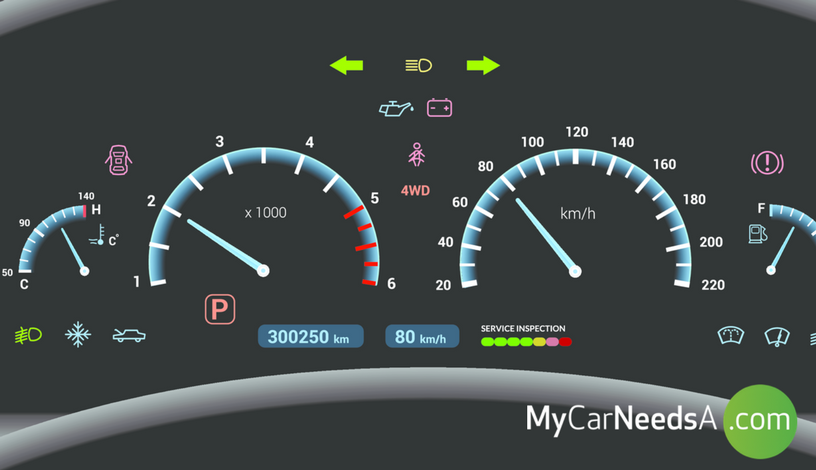What Does It Mean If My Brake Light Is On

That persistent glow on your dashboard – the brake light – it’s more than just an annoyance. It’s a critical communication from your car, a signal that demands immediate attention. But in a world of increasingly complex vehicles, what does that light really mean, and how is its significance evolving with the future of automotive technology?
Beyond the Basics: Decoding the Modern Brake Light
Traditionally, a brake light indicated one of three problems: low brake fluid, a malfunctioning parking brake, or a more serious issue within the braking system itself. While these remain valid concerns, the advent of advanced driver-assistance systems (ADAS) and electric vehicles (EVs) adds new layers of complexity. In a modern car, the brake light could also be triggered by:
- ADAS Faults: Issues with systems like Automatic Emergency Braking (AEB) or Adaptive Cruise Control (ACC) can sometimes trigger the brake light. These systems often rely on the braking system for their operation, and a fault within the ADAS can manifest as a general brake warning.
- Regenerative Braking Issues: EVs and hybrids utilize regenerative braking to recapture energy during deceleration. A malfunction in this system, which is intimately linked to the traditional braking system, can illuminate the brake light. This could range from a minor software glitch to a more significant hardware failure.
- Sensor Malfunctions: Modern vehicles are packed with sensors. A faulty wheel speed sensor, for instance, can disrupt the ABS (Anti-lock Braking System) and trigger the warning light, even if the brakes themselves are functioning.
The rise of over-the-air (OTA) updates promises to mitigate some of these issues. Automakers can now remotely diagnose and even fix certain software glitches that might trigger false alarms. However, this also raises cybersecurity concerns. A compromised vehicle could potentially trigger false brake warnings, leading to dangerous situations. Robust security measures are paramount to ensuring the safety and reliability of OTA updates.
Electric Vehicles: A Brake System Revolution?
Electric vehicles are fundamentally changing how we think about braking. Regenerative braking significantly reduces the wear and tear on traditional brake pads and rotors. In some EVs, these components can last for hundreds of thousands of miles. This, however, introduces new challenges. Infrequent use can lead to corrosion and seizing of brake components, particularly in regions with harsh weather conditions. To combat this, manufacturers are exploring solutions like:
- Automated Brake Cleaning: Systems that periodically apply the brakes lightly to remove surface rust and debris.
- Smart Brake Calipers: Calipers equipped with sensors that monitor brake pad thickness and rotor condition, providing proactive warnings before problems arise.
- AI-Powered Diagnostics: Using artificial intelligence to analyze sensor data and predict potential brake failures before they occur. This could involve monitoring brake fluid pressure, pedal travel, and other parameters to identify anomalies.
The long-term impact of EVs on brake system maintenance is still unfolding. While reduced wear is a major benefit, the potential for corrosion and the complexity of regenerative braking systems require careful attention. A shift towards preventative maintenance and advanced diagnostics will be crucial.
The Future of Automotive Communication: Beyond the Dashboard
Imagine a future where your car proactively communicates its maintenance needs directly to your preferred mechanic, scheduling appointments automatically based on real-time data from its onboard systems. This is the promise of connected car technology. The brake light, as a crucial indicator of vehicle health, will play a key role in this ecosystem.
In the future, the brake light might not even be a light at all. It could be a notification on your smartphone, a voice alert from your car's virtual assistant, or a message displayed on your heads-up display. This information could be contextualized with detailed diagnostic data, allowing drivers and mechanics to understand the problem fully before even looking at the car. Furthermore, vehicle-to-vehicle (V2V) communication could use brake light activation data to warn nearby drivers of sudden stops or potential hazards, enhancing overall road safety.
However, this utopian vision hinges on addressing several critical challenges:
- Data Privacy: Ensuring the responsible collection and use of vehicle data, protecting driver privacy, and preventing unauthorized access.
- Standardization: Establishing industry-wide standards for data communication and diagnostic protocols to ensure interoperability between different vehicles and service providers.
- Accessibility: Making advanced diagnostic tools and connected car services accessible to all drivers, regardless of their vehicle's age or technology level.
Overcoming these hurdles is essential to realizing the full potential of connected car technology and transforming the humble brake light into a powerful tool for proactive vehicle health management.
The future of mobility is not just about electric vehicles and autonomous driving. It's about creating a seamless, intelligent ecosystem where vehicles communicate with each other, with infrastructure, and with their drivers to enhance safety, efficiency, and convenience. The brake light, once a simple warning signal, is evolving into a key component of this interconnected future. It represents a shift from reactive maintenance to proactive vehicle health management, empowering drivers to stay informed and safe on the road. As we embrace these technological advancements, let us not forget the fundamental principle: safety must always be the paramount concern. Only then can we truly unlock the transformative potential of the automotive revolution and drive towards a future where mobility is safer, smarter, and more sustainable for all.
